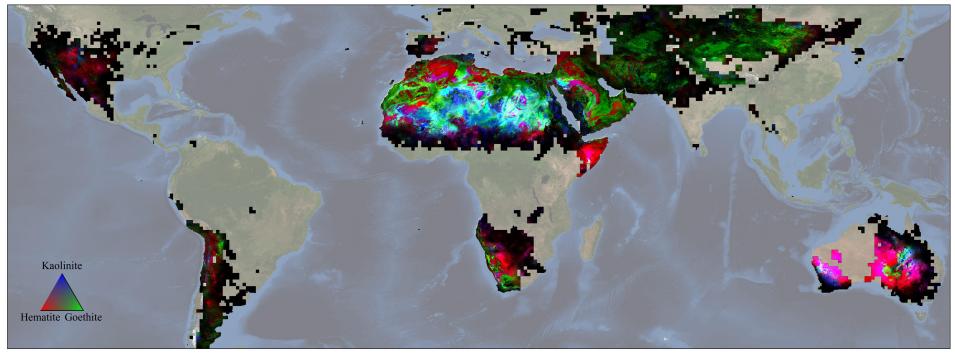From its perch on the exterior of the International Space Station 250 miles above the planet, NASA's Earth Surface Mineral Dust Source Investigation (EMIT) imaging spectrometer has one job: mapping the surface composition of Earth's mineral dust source regions. It's an important task. Not only will this information help scientists know what minerals reside in Earth's dust source regions, but the creation of such a map will improve the computer models that scientists use to assess the regional and global heating and cooling effects of mineral dust both now and in the future.
At the core of the EMIT mission is the science of imaging spectroscopy, an advanced technology invented by NASA for use in space missions designed to study celestial objects and other phenomena. In EMIT's case, the spectrometer is directed toward Earth rather than away from it. For each location the instrument sees, it measures the spectrum of light—from the visible into the infrared—reflected from Earth's surface. These measurements are what reveal the distinct spectral signatures (or 'fingerprints') of the minerals in the planet's dust source regions and make the creation of that mineral map possible.
Of course, spectroscopy can be used to detect more than minerals. In the following Data Chat, Dr. Philip Brodrick, data scientist, software systems engineer, and research technologist at NASA's Jet Propulsion Laboratory (JPL) in Pasadena, California, discusses the technology's benefits, the ways scientists are beginning to use it to study a wider variety of environmental interactions (such as the physiology of terrestrial vegetation and aquatic systems, snow and ice accumulation, and surface change), and how collaborative efforts to develop, improve, and apply the algorithms for spectroscopy data have spurred the field’s rapid growth.
What is satellite spectroscopy?
Spectroscopy, or imaging spectroscopy, as we tend to call it for this particular class of instruments, is a tool that's been around for a long time. Historically, it's been used to look away from Earth, not toward it. That's because if you're looking at a star, or an exoplanet, or something that's really far away, you can use the specific absorptions of light to tell you something about the composition of that object. This same technology is equally valuable for looking at the Earth system. It can tell you something about the structure and the composition of what you're looking at; and the higher the spectral resolution with which you look at it, the more information you get out of it.
A great challenge with spectroscopy is that instead of a three-band RGB image, you have an image with hundreds of wavelengths, so it's way more data dense. But, of course, that's where its value lies. It's really been over the last five or so years that the use of spectroscopy has picked up. There's been a dedicated spectroscopy community within the Earth science domain for decades, but the scale of what you can do now is transformative. Now we have one of the very best of these instruments ever built—the EMIT imaging spectrometer—in orbit.
Why is the EMIT spectrometer so well suited to measuring Earth's mineral dust?
EMIT models Earth's surface mineralogy, not the dust in Earth's atmosphere. That's because the material in the atmosphere is highly intermittent. Why is EMIT's spectrometer so well suited for that? Mineralogy is more or less the poster child for what you can do with a spectrometer because it's got these big bold absorption features in different parts of the spectrum. These absorption features allow us to identify the distinct signatures of the minerals in dust source regions.
So, if you were looking at it from another multiband imager, you might see a feature on the landscape that's associated with a class of minerals, but you wouldn't be able to tell which one. With EMIT, those absorption features tell you what it is and how much of that material is there. The real big thing that EMIT makes possible is the ability to determine those abundances, not just the presence or the absence. There is a plethora of other applications for spectroscopy, but minerology is really a prime example.
